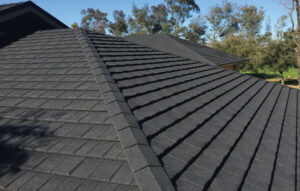Whether you are considering roofing repairs for your home or your office building, there are several things you should know before you begin. These include installing shingles, laying underlayment, and getting a professional roof inspection. Click here to learn more.
A roof inspection is a vital part of maintaining your home. Not only does it help protect the rest of your property from the elements, but it can also save you money. It’s a smart move to hire a qualified roofing professional to perform a thorough checkup.
During a roof inspection, the inspector will assess the materials used, the quality of installation, and any visible signs of damage. This is especially important if you’re planning to sell your home. Keeping your roof in good repair will ensure that your house looks its best for a potential buyer.
As well as looking at the roof itself, the inspector will look at your gutters and soffits. A roof without proper drainage can cause serious water damage. Also, a clogged gutter can lead to a leaky roof and could even exacerbate the problem.
If you have a roof that’s in need of a refresh, a spring tune-up can be a great time to remove the debris that’s accumulated over the winter. You should get your roof checked out after any significant storms, too.
While a roof inspection isn’t mandatory, it can make your life easier and prevent you from having to pay for costly repairs down the road. By identifying the smallest possible flaws, you’ll have more confidence in your roof’s ability to hold up over the years.
The best way to tell if your roof needs a major overhaul is to have a professional perform a test run. Roofing professionals can perform a number of tests, such as checking the strength of the roof’s structure, assessing the quality of the materials used, and making sure that the flashing and vent boots are in good working order.
An inspection will also help you discover minor issues, such as cracks in the roofing membrane. These may not seem like a big deal at first, but they can grow to be a bigger headache if ignored.
Getting a quality roof inspection can lead to a longer roof life, fewer repairs, and a healthier home. Having the roof inspected before a storm can help prevent damage, and the cost of repairs can be a fraction of the price of replacing the roof.
When it comes to laying shingles, there are a number of different methods to choose from. Whether you are installing architectural or standard shingles, you want to make sure you are getting the most out of your investment. For example, you can apply a water shield over your roof to protect from potential ice damming and leaks.
Aside from the obvious, you also want to make sure you are installing a waterproof underlayment. This can be an ice and water shield or a felt paper underlayment. Both of these are designed to provide temporary weather protection. The ice and water shield should be laid over the bottom two or three rows of shingles, while the felt paper underlayment should extend 24 inches beyond the exterior wall line.
If your roof has a valley, you’ll need to make sure you’re putting in the right shingles. For starters, you’ll need to cut a half-tab off the left side of the gable roof.
You’ll also want to install a starter row of shingles. These may be rolls of strip material, or they could be special shingles. They should be cut to the same size as your ridge shingles. In some communities, you can actually install three layers of shingles, which will help your roof last longer.
You can also use metal flashing. Usually, metal flashing is installed over the upper shingles. It’s designed to form an extra layer of protection over the valley seam.
Using a chalk line is a good way to ensure that your shingles are straight and square. There are also many different shingle-laying tools out there to help you. Make sure you have the proper equipment, like a good nail gun with a lower air compressor, to ensure that you’re using the best tool for the job.
Another thing to keep in mind is the length of your shingles. You don’t want to have to cut a half-tab off the bottom of a gable if you don’t have to.
Once you’ve finished laying the shingles, you can begin to seal the gaps. Make sure you’re not nailing the nails too close to the center of the shingle. Nails should be driven about a half inch from the edge of the shingle.
